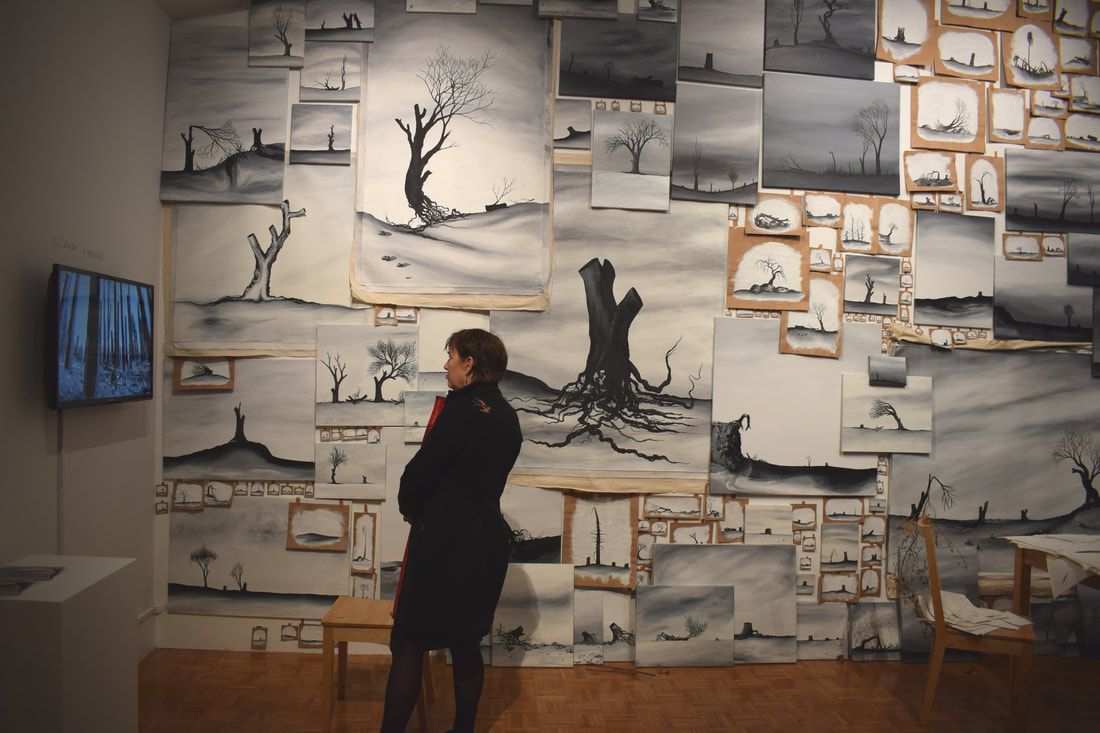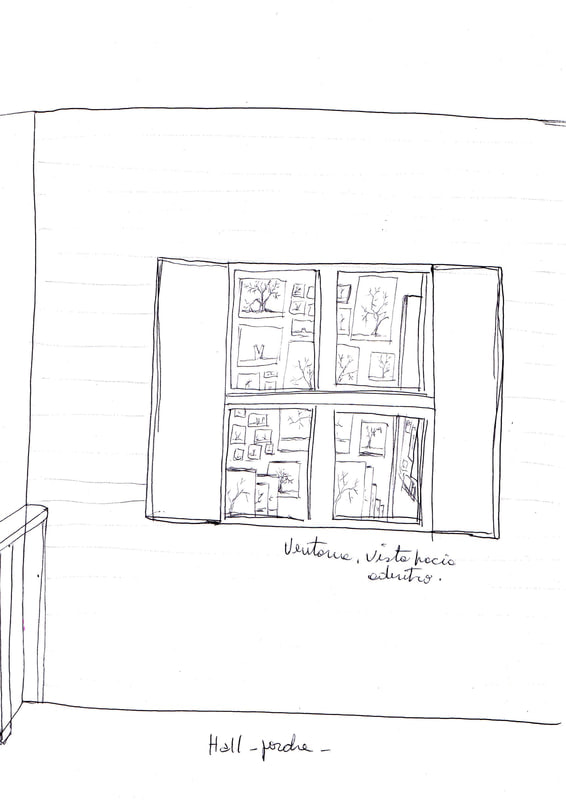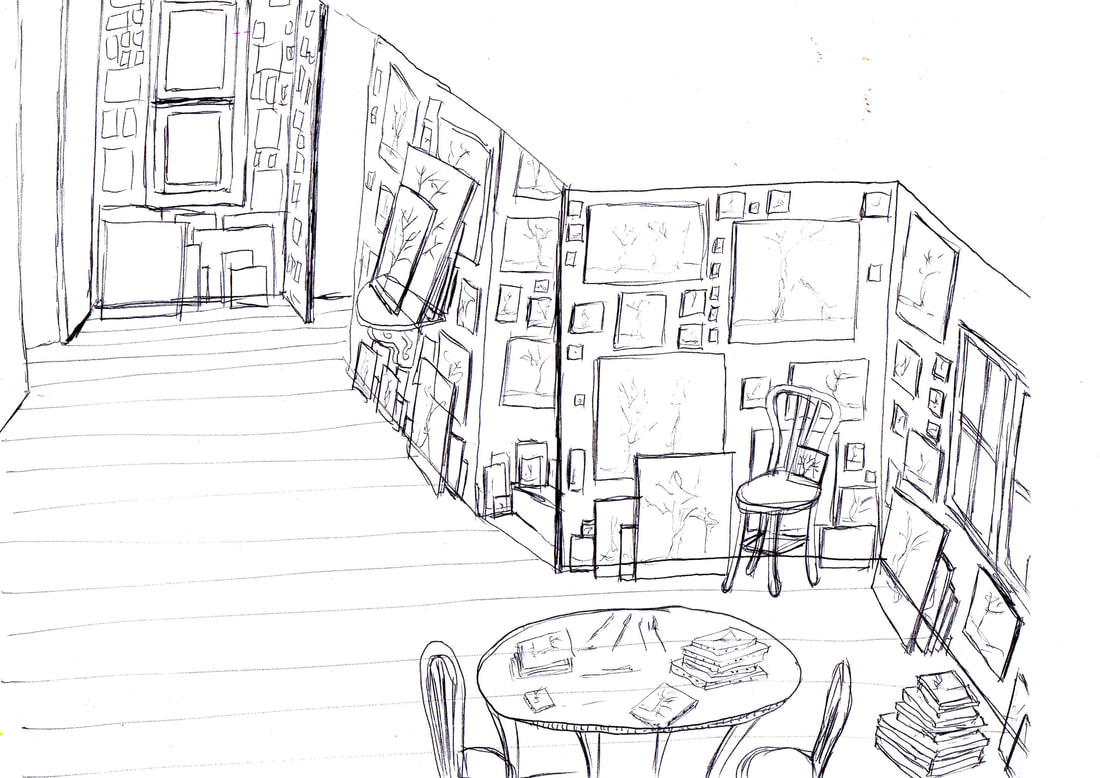This exhibition represents a proposal for an ambitious, large-scale outdoor installation and community engagement project by Lucas Artists Fellow Máximo González. Over a period of six years, González has carefully crafted a mysterious alter ego he calls “the collector.” Performed by the artist, this elusive figure has traveled the world painting portraits of dead and dying trees. Many of these works are on view here.
In July 2016, González undertook a one-month residency at the Lucas Artists Program (LAP) at Montalvo Arts Center. During his stay he traveled to some of California’s most treasured national parks to continue working on this project. At the end of his time at the LAP, González presented a proposal for a new art installation on Montalvo’s grounds. The project will consist of a small cabin nestled in Montalvo’s woods that will contain hundreds of paintings, drawings, and studies of dead, dry, burnt, and cut trees amassed by “the collector.” This Project Space installation is intended to convey how that space might appear once it is constructed. Montalvo’s patrons will be able to visit the cabin, which will become a site for community conversation and workshops about environmental sustainability, the health of our forests, and our role as stewards of public lands. Guided storytelling tours to the cabin will feature tales by writers who take the fictional character of “the collector” as a point of departure to create compelling new narratives.
For González, this project represents an opportunity for the artist to confront his growing concern about the negative impacts of climate change, as we seem to be slipping further and further into a new and uncertain era of environmental jeopardy—perhaps most recently demonstrated by the devastating wildfires in Northern and Southern California.
| Imagine you are walking along one of Montalvo’s forest trails one day. This is a trail you know very well and have walked countless times, only today something is different. As you turn a familiar corner, the path diverts in an unexpected way. You follow this new trail and slowly, unexpectedly, a small cabin nestled in the woods comes into view. You walk toward it. It appears to be abandoned. Now you are at the entrance and you peer through the windows on either side of the doorway. Inside the cabin are hundreds of paintings and drawings, large and small. The walls are covered floor to ceiling; canvases lean against the cabin’s simple furnishings. All of the paintings depict the same subject matter: dead or dying trees, always rendered in black pigment. Some paintings depict trees charred by fire, others suffering from disfiguring disease. You ask yourself “Who lived here? Why have they dedicated so much time to these paintings?” Days later, still thinking about that strange abandoned house, you hear a rumor about the person who used to live there. People call him “the collector.” He traveled the world for decades, painstakingly painting these tree portraits. They say that before he disappeared, he left a note that read: “When I am gone, I want this house to become an eternal tree. I leave it in your care. —Máximo González |
Meet the Artist
MÁXIMO GONZÁLEZ
Website
Máximo González Argentina who conducts playful investigations into contemporary politics and popular culture using unexpected everyday materials that he infuses with the handmade delicacy of fine craft. González has had over 40 solo shows including such recent exhibitions as Monumento al Peligro, Museo de San Idelfonso (Mexico City, Mexico); Estertor, Galería de Arte Contemporáneo de Xalapa (Jalisco, México);POGO, Museo Hospicio Cabañas (Guadalajara, Mexico); Walk among Worlds, Fowler Museum (Los Angeles, California); Magnificent Warning, Stanlee and Gerald Rubin Center for the Visual Arts, The University of Texas (El Paso, Texas); and Playful, Craft and Folk Art Museum (Los Angeles, California). He has participated in over 130 group exhibitions at such venues as Scotiabank Nuit Blanche (Toronto, Canada); San Jose Museum of Art (San Jose, California); Museum of Contemporary Arts Los Angeles (Los Angeles, California); The Vancouver Art Gallery (Vancouver, Canada); University Contemporary Art Museum (MUAC) (Mexico City. Mexico); and the Museum of Modern Art (Mexico City).
Installation Images
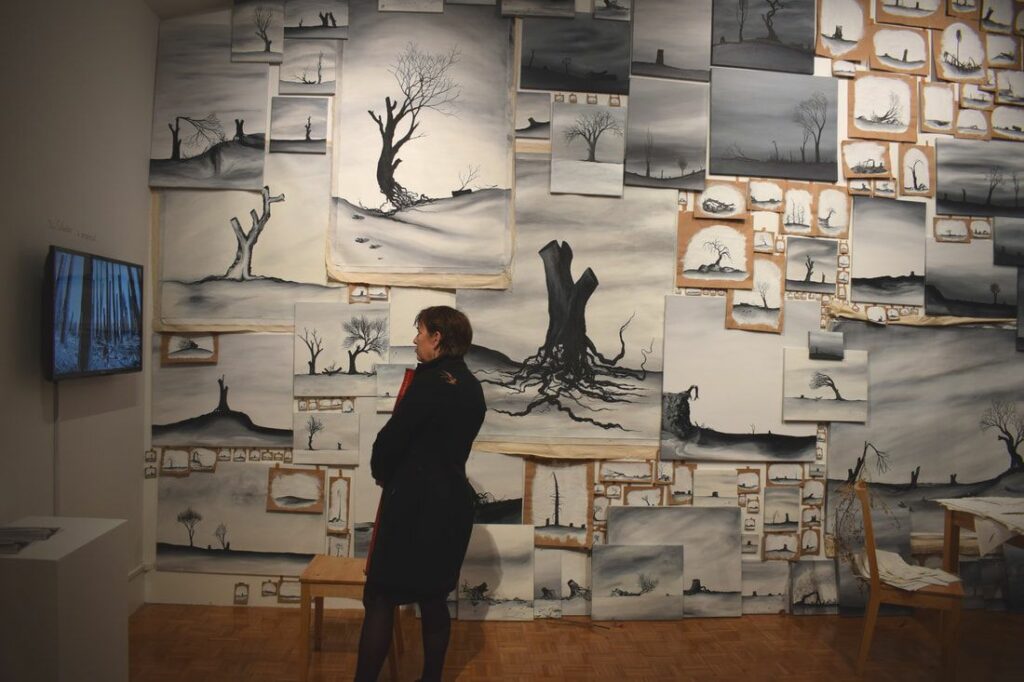
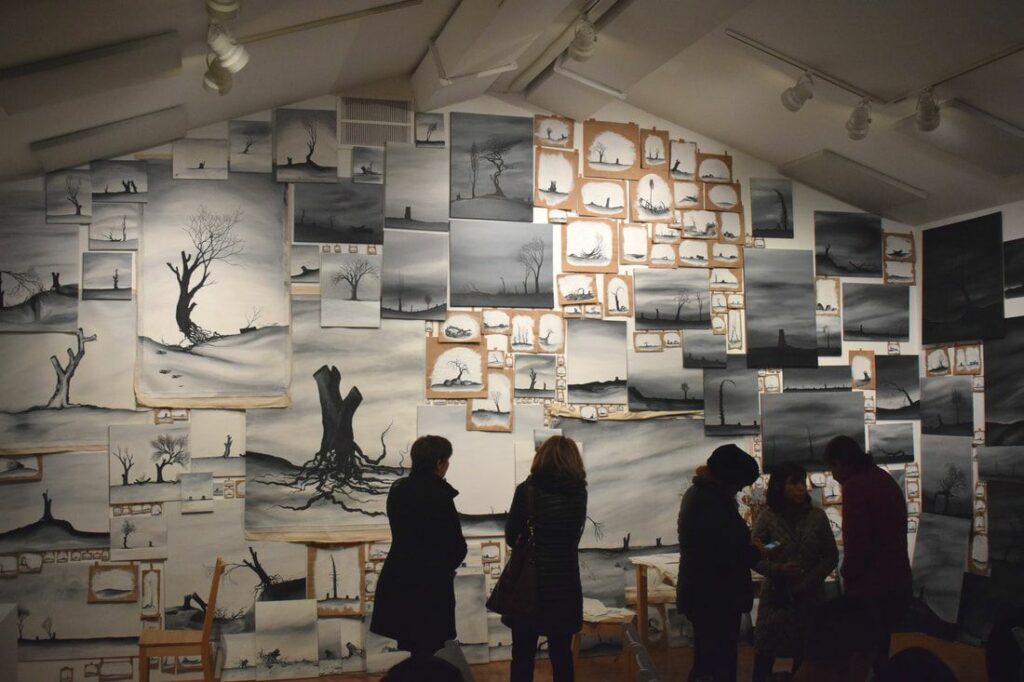
Artist Sketches
Click the images to view them in a larger format.
In the News
- EXCLUSIVE: Argentine Artist Thanks Police for Recovering Stolen Works of Art in Los Banos
By David Louie, ABC 7 News - Here’s how Media and Awareness led to Recovery of Stolen Artwork in Los Banos
By Vikaas Shanker, YourCentralValley.com - Los Banos Police Recover Hundreds of Stolen Paintings
By Oscar Maciel, Los Banos Enterprise - Nearly 300 Paintings Stolen From the Back of a Truck in Los Banos
By Rob Parsons, The Fresno Bee - Large Art Theft Reported From Maple Inn on Pacheco Blvd.
By Dutra’s The Paper - Police Looking for 268 Painting and Drawings Stolen From Parking lot in Los Banos
By abc30

